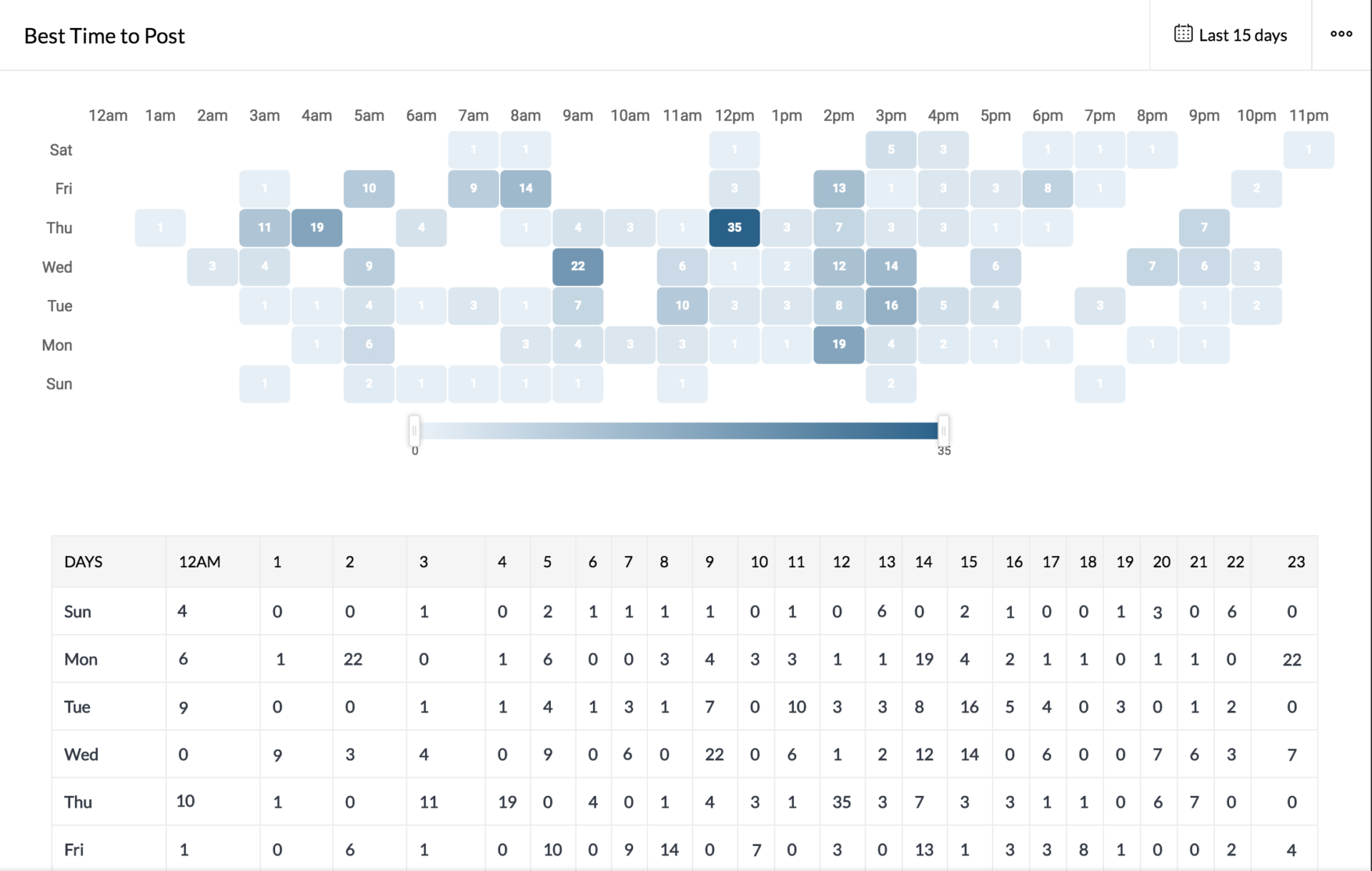How to craft your brand’s social media persona
- Last Updated : August 17, 2023
- 15.4K Views
- 9 Min Read

There are multiple online marketing channels that brands can use, and social media is probably the most valuable of them all. This is because there are many marketing goals that can be achieved through the use of these channels. When done right, social media can be an incredibly effective part of your marketing toolkit.
However, every brand knows this—your competitors are on social media, too! From large brands across all industries, like Nike and Merriam-Webster, to local bakeries, everyone is on social media. While that’s a testament to the effectiveness of these channels, it also poses a challenge to brands like yours. How do you stand out? How do you get noticed?
Given the excessive noise on social media today, it’s not enough if you just do social media right. You’ll have to do it well. One of the most important things that you can do is to create a brand persona.
What is a persona?
Simply put, it’s the combination of characteristics or qualities that form your distinct brand personality. It could be anything that sets you apart from everybody else—a distinct voice, tone, character, or approach. This is extremely useful, because your followers aren’t on social media to read statistics. They care a lot less about how many awards you’ve won or how long you’ve been around, and a lot more about who you are and what you stand for. In fact, studies have found that almost 90% of people would buy from your brand if you advocate a cause they care about. Besides, no one wants to talk to a logo—they want to talk to real people.
Even if you ignore all of that, having a social media persona can help you in other ways. Your social media persona will:
- Be the vehicle through which you apply your social media strategy and achieve your goals
- Guide the content you post, the tone you use, and how you engage with your audience
- Help you be more memorable in the social media space
People associate themselves with the brands they use and consider them an extension of their own personality. Nowadays, consumers take pride in the brands they’re associated with. Social media can help you build a brand personality that resonates with your audience and makes them believe that you’re the right brand for them. But the way you do that is through having a great social media persona.
How to build a persona
Creating a brand persona on social media doesn’t have to be complicated at all. Just a few simple steps, and you’ll be on your way to finding and building the perfect persona for you. Here are some steps to keep in mind:
Identify your target audience
Your persona is how you’re going to project your brand through social media, and it will depend on how you want to be perceived. Ideally, the brand persona that you choose should be something that’s attractive to your target audience.
Which is why the first step to creating a successful persona is to identify your target audience. One way to do this is to create the profile of an “ideal customer.” Document everything you know about who you’re targeting. What’s their age group? Is your product for men, women, or both? How much money do they make? What are their interests? The more specific you get, the better you’ll be able to craft your persona.
Another thing you can do is to study your existing audience. You should be able to figure out what age groups are currently following you, and in what ratios. Try to ascertain as much demographic data as you can.
You can use the data you acquire from your study of both your existing audience and your “ideal customer” to create a brand persona. But that isn’t all you should focus on.
Choose the networks that your audience is on
If you have data on both your “ideal customer” and your existing audience, you should be able to choose the right social media channels to be on.
Your brand can’t—or shouldn’t—exist on every single channel that’s available. While you might want to have a presence on major channels like Facebook, Instagram, and Twitter, you’ll have to be selective about the other channels you choose. Carefully choosing the channels you’re going to build on gives you more advantages and context on which to build your brand persona.
Firstly, the networks you choose will impact the type of content that you put out. If you market yourself on channels like YouTube, you already know that you’re going to have to create a sizable amount of video content. If you’re on Instagram, you’ll need to have visual content, and you should also consider using Stories to your advantage.
Similarly, every network that exists has its own niche, and its own quirks, all of which you’ll have to consider while crafting your persona. For example, take a look at the comments section of any YouTube video, and compare it with the comments on an Instagram post. Hint: one of them will be a lot more positive than the other, most of the time.
Secondly, the networks you choose all operate on different algorithms, and different posting frequencies work better on different channels. You can’t post 20 times a day on each network and expect to have the same amount of success on all of them.
What does this have to do with crafting your brand persona? While it might not seem like much, it’s important to keep these in mind while creating your content. You might find it easier to build your persona on Twitter and Pinterest because you’ll be posting there a lot more frequently, but you’ll want to make that one post on Facebook or Instagram really impactful.
Choose your voice/tone
Great! You now know your target audience, and the networks that they’re on. You have almost all the information you need to create the perfect persona for your brand.
Before you decide the tone that you take in your social media posts, you should again consider both the audience you’re targeting, and the networks you’re posting on. Different tones work better on different channels. For example, memes will work better on Twitter and Instagram than they do on LinkedIn. Different channels also have different content limitations that you’ll need to consider while making your posts. You’ll see a lot of brands using humor in their social media content, simply because it works almost universally.
While choosing the tone that you’re going to use, make sure that it’s also reflective of your brand culture. Nike’s tagline is “Just do it”, and they’ve always focused on inspiring people to follow and achieve their dreams. A simple look at Nike’s Twitter feed will show you how they stay true to it.

You’ll need to have a strong understanding of what image you want to put out, and how you want your brand to be perceived. Do you want to be seen as fun and quirky, or as a premium brand? The tone you choose should reflect this. And keep in mind that this should also gel with the tone you’re using on other marketing channels outside of social media, such as the content on your website or newsletters.
One thing you can do is find a role model. Pick a celebrity, or a character, or even another brand that best embodies how you want to be perceived. This can help you decide what type of content you want to create. While this role model shouldn’t dictate exactly how you present your brand, it can help inspire you and put you in the right state of mind while you’re creating your content.
Update your social media profiles to reflect your persona
Congratulations! You’re now ready to unveil your brand persona. The only thing that remains is to build this persona, and then consistently maintain it across different channels.
As a first step, you might want to start updating all your social media profiles. Make sure that the information you provide is accurate, but also take note of the tone that you’re using. The bio, or the “about” section, is extremely powerful. You can take advantage of it to tell your followers exactly who you are, and what they can expect from you.
While updating your social media profiles, don’t forget your visual branding. You can use your company’s logo, or any symbol that’s associated with your company, as your profile picture across different channels. It’s also useful to have a set color palette, that your audience can immediately recognize you by.
A hack you can use is to create templates. Create a style guide where you can document the font and colors that you want to use in all your content. You can also take it a step further and include the filters you want to use on the visual content that you’re putting out. You can even document other stylistic elements that you want to keep consistent across different channels.
While it’s true that different tones work better on different channels, you should try to keep it relatively consistent across the channels you’re on. This doesn’t mean that you push the same copy on every channel, but that you should be mindful of the tone you’re using on each channel. Ensure that it isn’t contradictory to the tone you’re taking on any others, and you should be fine.
Once you start posting content with the persona that you’ve created, try to stick to the voice at all times. Constantly changing your persona will make you seem inauthentic, and your audience can easily see through it. The feeling of distrust this creates can be difficult to shake off, and people may not take you seriously.
Post and curate content regularly
There’s really just one singular thing that would kill your branding efforts on social media: irregular posting.
If you’re going to make just one tweet a week or post one picture to Instagram per month, your audience is going to forget you—you have to post regularly. This study recommends the following frequencies:
- Facebook: 1 post per day
- Twitter: 15 tweets per day
- Pinterest: 11 pins per day
- LinkedIn: 1 post per day
- Instagram: 1-2 posts per day
However, keep in mind that these are recommendations and not rules. Social media is extremely dynamic. How much, and when, your post will depend largely on your audience. It might take a bit of trial and error to find out what works perfectly for you, but you can consider investing in a social media management tool to help you with this.
Many social media management tools come with an analytics tool, and they have different reports that you can generate to analyze your engagement rates and find out what time is best for you to post. This is how it looks in Zoho Social:

Apart from posting your own content, you should also try to curate content when possible. This will add variety to your feed and keep it interesting. One thing to keep in mind is that you should only curate content that’s relevant to your industry. This will help you build an image as an authority in the field that you’re in.
You should also consider using humor in your social media updates. Even if you don’t want to be known as a “funny” brand, using humor once in a while is highly recommended, because everyone loves to laugh. The only thing that you’ll need to keep in mind is that the kind of humor you choose should be reflective of your brand persona, while also aligning with what your audience enjoys. Here’s a guide to using humor in your social media posts that can help you get started.
Building a brand persona might seem like hard work, but the payoff is worth it. Spend some time getting to know your audience, what they need, and how you can best communicate what you offer to them, and you’ll soon find that your persona will help guide a lot of the content you’re putting out.
That’s it from us for today! If there’s something you’d like to add or discuss with us, please leave a comment below, and we’ll be sure to get in touch with you. Good luck!
 Vishal
VishalContent writer at Zoho Social, stand up comedian, and lover of dogs. I read a lot.











